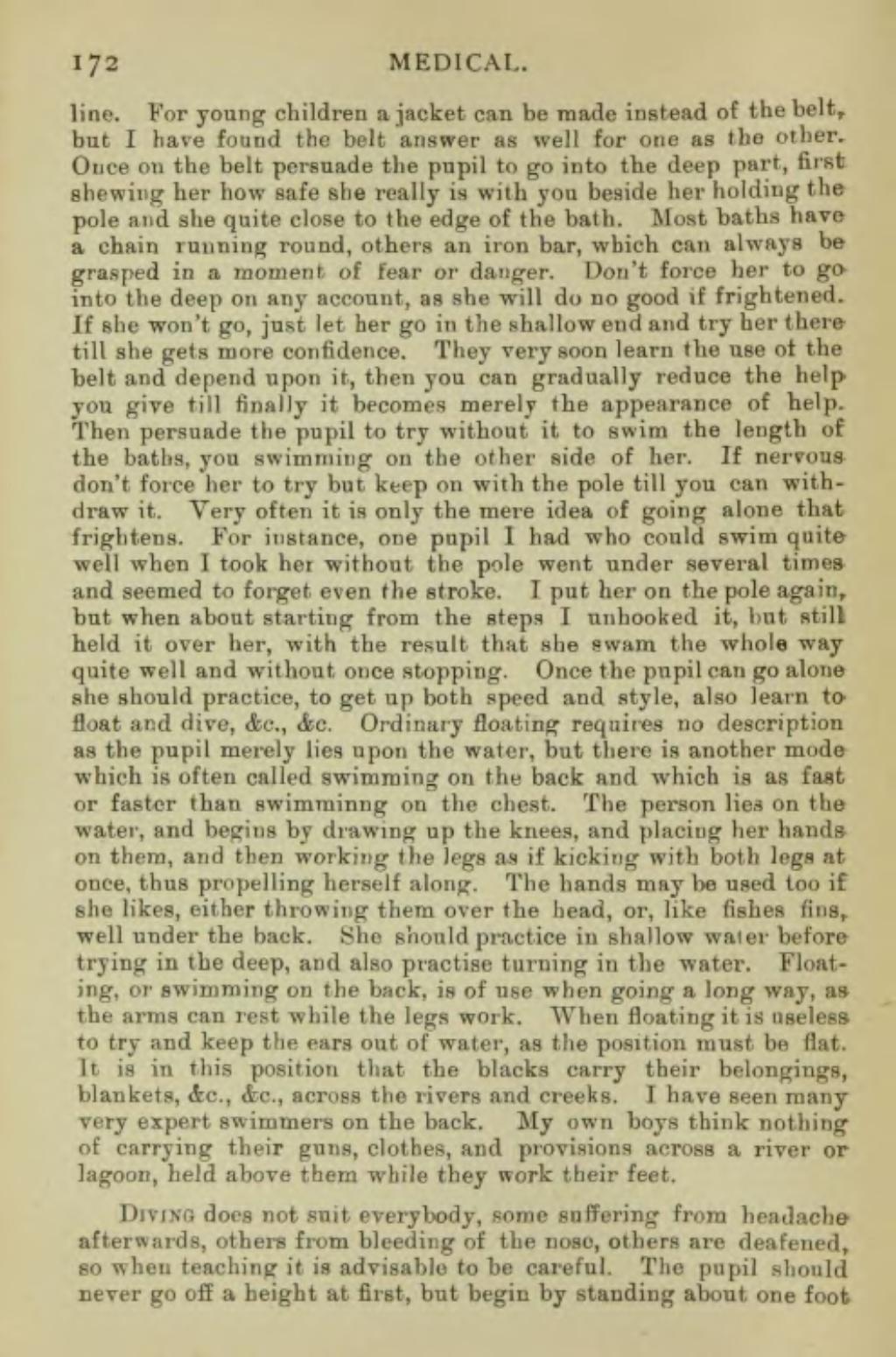line. For young children a jacket can be made instead of the belt, but I have found the belt answer as well for one as the other. Once on the belt persuade the pupil to go into the deep part, first shewing her how safe she really is with you beside her holding the pole and she quite close to the edge of the bath. Most baths have a chain running round, others an iron bar, which can always be grasped in a moment of fear or danger. Don't force her to go into the deep on any account, as she will do no good if frightened. If she won't go, just let her go in the shallow end and try her there till she gets more confidence. They very soon learn the use of the belt and depend upon it, then you can gradually reduce the help you give till finally it becomes merely the appearance of help. Then persuade the pupil to try without it to swim the length of the baths, you swimming on the other side of her. If nervous don't force her to try but keep on with the pole till you can withdraw it. Very often it is only the mere idea of going alone that frightens. For instance, one pupil I had who could swim quite well when I took her without the pole went under several times and seemed to forget even the stroke. I put her on the pole again, but when about starting from the steps I unhooked it, but still held it over her, with the result that she swam the whole way quite well and without once stopping. Once the pupil can go alone she should practice, to get up both speed and style, also learn to float and dive, &c., &c. Ordinary floating requires no description as the pupil merely lies upon the water, but there is another mode which is often called swimming on the back and which is as fast or faster than swimming on the chest. The person lies on the water, and begins by drawing up the knees, and placing her hands on them, and then working the legs as if kicking with both legs at once, thus propelling herself along. The hands may be used too if she likes, either throwing them over the head, or, like fishes fins, well under the back. She should practice in shallow water before trying in the deep, and also practise turning in the water. Floating, or swimming on the back, is of use when going a long way, as the arms can rest while the legs work. When floating it is useless to try and keep the ears out of water, as the position must be flat. It is in this position that the blacks carry their belongings, blankets, &c., &c., across the rivers and creeks. I have seen many very expert swimmers on the back. My own boys think nothing of carrying their guns, clothes, and provisions across a river or lagoon, held above them while they work their feet.
Diving does not suit everybody, some suffering from headache afterwards, others from bleeding of the nose, others are deafened, so when teaching it is advisable to be careful. The pupil should never go off a height at first, but begin by standing about one foot
